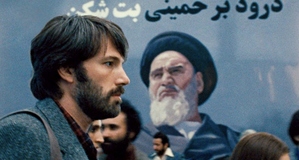Career Snapshot: The Film Director, A Human Lens
By
2010, Vol. 2 No. 03 | pg. 1/1
KEYWORDS:
The scene is set for another take: the actors and extras are in costume and in place; the set decorator has set the stage just as the vision of the film entails; the director of photography has the lights and cameras ready to capture the action. However, before the scene begins, they all turn their attention to one person on set – the director. It is the director’s job to translate the script to the screen as he directs the array of people working under him on how to best capture his artistic vision for the film. Director Christopher Nolan (Memento, The Dark Knight) says of his job, “I’m a sort of human lens through which everyone’s efforts are focused. A big part of my job is making decisions about how all the great talent that I’m working with blends into a single consciousness” (Rabiger 5). A great director is a great leader with drive, patience, inspiration, and imagination. He is responsible for working with a cast and crew of creative individuals, before, during, and after production, to see that his vision is played out and captured on film as his heart desires. Directing is an appealing and competitive career field which requires unflinching dedication, balanced leadership skills, ingenious creativity, and a keen knowledge of the business of making movies. Becoming a DirectorDirecting is a glamorized profession, and though rewarding, achieving this distinguished position requires a large amount of hard work and dedication. While inexpensive digital video cameras and websites like YouTube make it easy for anyone to be a director, to find success in the professional field requires years of experience and training. Film school is an expensive and important investment, but the experience of being trained by accomplished professionals in the field is invaluable. University of Southern California film professor Jean-Pierre Geuens emphasizes that film school is about more than gaining technical know-how: “Film school is about finding out who you are, it's not just about acquiring a specific amount of knowledge or the latest techniques. You need to learn who you are, what you stand for and how good you are” (Geuens). Film school graduates don’t simply jump from their seat at graduation to the director’s chair. Cities like Los Angeles and New York are hot spots for the film industry and offer opportunities for graduates to gain experience and build portfolios. In these big cities it is unlikely to find a job right away, so many aspiring film makers use internships, often unpaid, to gain experience and recognition. The Director’s Guild of America sponsors the Assistant Directors Training Program which allows prospective directors to receive experience as assistant directors. Many first-time directors begin by directing small productions such as commercials, television episodes, or independent films. Newcomers to the profession need to concentrate on developing and demonstrating their skills with different, often independently produced, projects to earn recognition essential for success. When a fledgling director has built a strong resume and secured relationships with professionals in the field, he is on his way to making movies. Making Movies The director is intimately involved with the planning and design of the film he is to create from initial conception to final product. Though a film will likely have professionals responsible for casting, screenwriting, set and costume design, and countless other pre-production jobs, it is not uncommon for a director to have considerable influence in these crucial areas. Because the director works so closely with actors during production, leading their movement and honing their performance, it’s important for the director to be involved with the selection process. In his instructional book on film direction, Michael Rabiger emphasizes the importance of casting: “You need actors enthusiastic about the character they play, who will work well with you and other cast members, and whose loyalty will be to the project” (Rabiger 258). Additionally, a director may want to select actors who are in line with his aesthetic and tonal vision for the film. Pre-production rehearsal with the actors is a useful way for the director to prepare them for a scene. Director Roman Polanski (Rosemary’s Baby, The Pianist) reflects, “my direction comes from actors' rehearsals. I rehearse and I let them free in the beginning rather than the other way around” (Montague). One of the most important aspects of pre-production for a director is planning the look and feel of the film. Storyboarding, sketching a sequence of pre-visualized graphics picturing how the scene will play out, is a common planning method used by directors. When the many stages of pre-production are completed, the director is ready to lead his team onto production. Production is the time when director’s vision materializes on film. On set, the director is the highest authority and the crew is there to help him capture his vision for the story. The notion of a passive director comfortably shouting orders from his chair is a misconception; his role is more active, demonstrating to the actors how they should move and behave within a scene and helping the director of photography to capture the desired shot. Though the crew ultimately answers to the director, his focus should be on the performances of the actors more so than the technical details of production. Rabiger suggests that, “the director, who should engage a director of photography (DP) able to effectively lead the crew, should concentrate on directing the action, and never lose sight of the preeminent needs of the cast” (Rabiger 329). He emphasizes the importance of having an experienced, professional crew capable of efficiently and effectively performing their roles. With so many departments involved in production, from cameras to sound to art, the director can’t be expected to babysit each individual. Rabiger laments that many first-time directors become distracted with overseeing the crew, and neglect “the human presence on the screen, the only aspect the audience really notices” (Rabiger 424). A good leader knows how to delegate duties so that he can focus expressly on what is most important, and the same is inherently true of a director: “A check of composition […] is absolutely necessary, but the director must be willing to give technicians and production personnel control of their areas” (Rabiger 424). So though he is the highest authority on set, the director’s primary role is not personnel management, but rather visionary management. He dictates his vision and it is the crew’s job to make it happen. When the story is captured on film, the movie is far from complete, for that film now goes onto post-production. When production wraps, the director is left with a series of out-of-sequence bits of untouched video and audio; it is the editor’s job to pull these elements together into the sequential story the audience will enjoy. This tedious process is known to take sometimes take longer than the actual shooting of the film. Because editing a film determines so much about how it looks, feels, and flows, it is common for the director to be present in the editing room, helping to see that the film is accurately cut together. A 2006 Boston Globe article focuses the goal of this partnership between director and editor: “From a daunting surfeit of footage shot out of sequence, the editor works with the director to extract and weave together the best material, their every decision shaping the film's rhythm and mood” (Winter). The director’s initial vision is sometimes limited in the editing room by creative disagreements with producers, production companies, and distributors, which can lead to special “director’s cut” versions of certain films. This highlights the importance of the relationship between the director and the producer. The Director and the Producer While it is true that the director is in charge of the artistic vision of his film, everyone answers to somebody; the director answers to the film’s producer. The producer’s job can sometimes be ambiguously defined, but in most cases he supervises the production of the film, much like the director, from beginning concept to final product. It is a producer who green lights a creative project for production after determining whether or not it has an audience and a studio willing to fund it. Because the producer is in charge of bureaucratic business such as funding, budgeting, hiring workers, studio relations, and distribution, all of which ultimately affects the director’s ability to create the film he wants to make, producers and directors work closely together. FilmMakers.com further defines the importance of this relationship: “It is much easier for the director to do their job when they do not have to deal with the constant pressures of the studio. In this respect, if the producer can assure the studio that all is going as planned and within budget, the director will be able to keep their concentration on the film itself” (FilmMakers.com). The producer communicates the progress of a film to the studio so the director can focus his attention on his art. Final Remarks Becoming a film director requires unmatched passion, vision, and dedication, all three of which are virtues to be channeled into high-quality films. Directing is a high pressure job and demands firm leadership and untamed imagination. A director must know how to manage people as well as how to be managed, two aspects of the job on which a film’s success hinges. Though achieving success in the field is no easy task, no other career would quell the artistic needs of a born film director.
Works Cited/Further Reading Geuens, Jean-Pierrew. "Filmmaking School Professor Interview." All Art Schools. . Montague, Taylor. "Roman Polanski: An Exclusive Interview." EuroScreenwriters. 20 October 2009 . Rabiger, Michael. Directing: Film Techniques and Aesthetics. Boston: Elsevier, Inc., 2008. "The Film Producer." 2000-2002. FilmMakers.com. 4 November 2009 . Winter, Jessica. "The Lost Art of Film Editing." 13 August 2006. Boston.com: Your Connection to The Boston Globe. 4 November 2009 . Works Consulted Geuens, Jean-Pierrew. "Filmmaking School Professor Interview." All Art Schools. . "How to Become a Movie Director." Education Portal. 4 November 2009 . "How to Become a Movie Director." Mahalo. 4 November 2009 . Montague, Taylor. "Roman Polanski: An Exclusive Interview." EuroScreenwriters. 20 October 2009 . Rabiger, Michael. Directing: Film Techniques and Aesthetics. Boston: Elsevier, Inc., 2008. "The Film Director." 2000-2002. FilmMakers .com. 4 November 2009 . "The Film Producer." 2000-2002. FilmMakers .com. 4 November 2009 . Windolf, Jim. "Q&A: Steven Spielburg." 2 January 2008. Vanity Fair. 2009 4 November . Winter, Jessica. "The Lost Art of Film Editing." 13 August 2006. Boston.com: Your Connection to The Boston Globe. 4 November 2009 . Suggested Reading from Inquiries Journal
Inquiries Journal provides undergraduate and graduate students around the world a platform for the wide dissemination of academic work over a range of core disciplines. Representing the work of students from hundreds of institutions around the globe, Inquiries Journal's large database of academic articles is completely free. Learn more | Blog | Submit Latest in Film & Media |
















